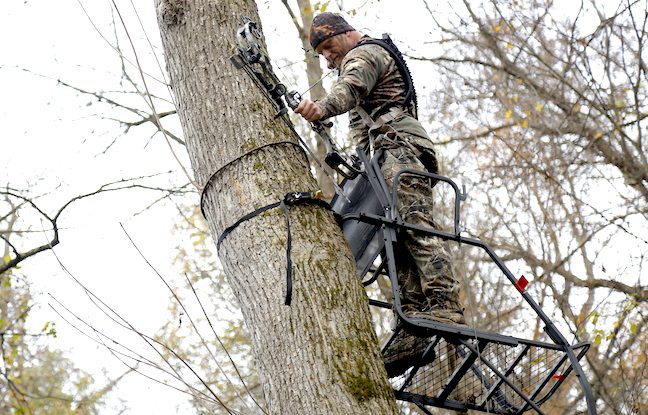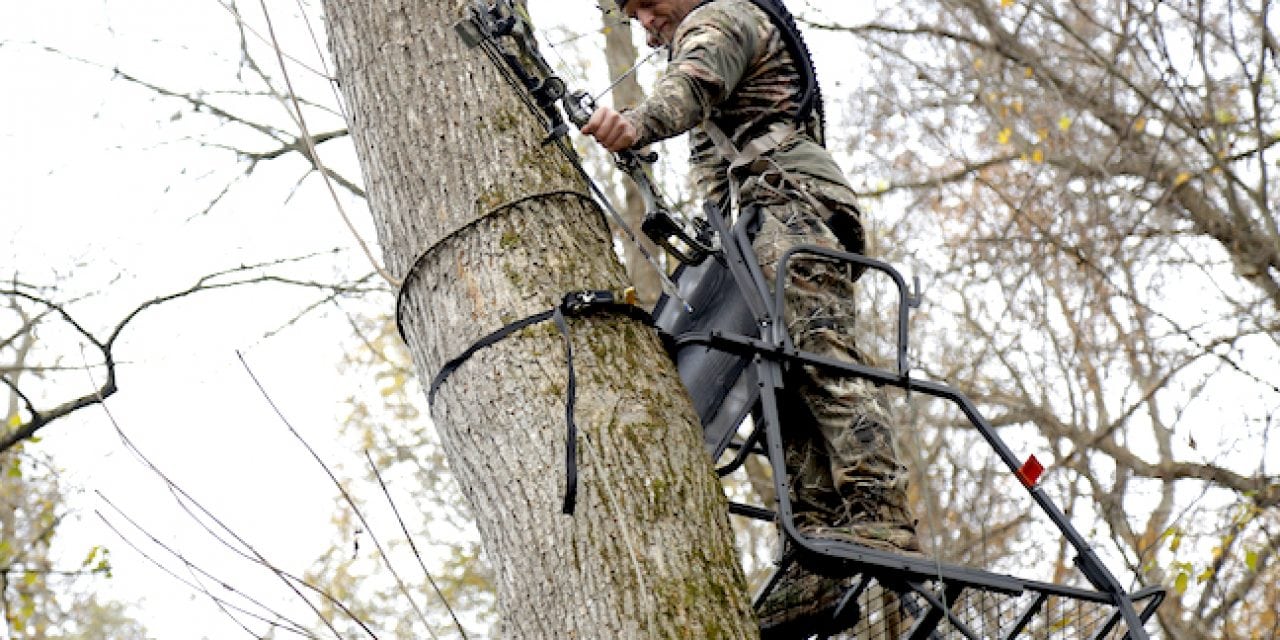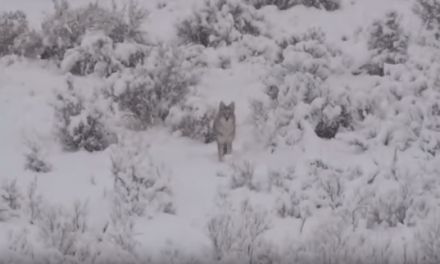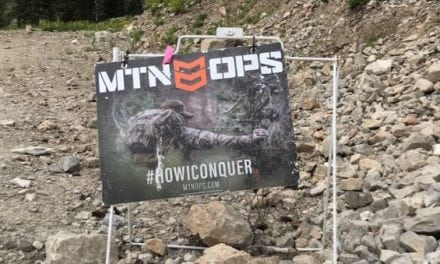The first opportunity for hunters to pursue deer each year is with a bow, and Kentucky bowhunting offers some of the best spots in the country.
While most folks utilize firearms to some degree for deer hunting, there are some dedicated archery enthusiasts who disregarding firearm hunting of any kind.
Now whether you’re a diehard bowhunter or just one of those who diversify hunting methods, Kentucky has plenty of excellent places for you to pursue deer with stick and string.

Try one of these spots this season and enjoy the great whitetail hunting available here in the Bluegrass State.(Shutterstock image)
UNION COUNTY
Union County is home to Higginson-Henry Wildlife Management Area, which is a bit over 5,400 acres. Also in Union County, and sprawling into Crittenden County, is the Big Rivers WMA and State Forest. Together these two properties offer bowhunters over 13,000 acres of opportunity. The down side is both of these properties are heavily hunted during bow season and crowding is definitely an issue to consider before hunting them.
Higginson-Henry has been mostly a bowhunting-only property for many years. In the past, there was a quota draw for a weekend firearm hunt, but that no longer exists. The only firearm deer hunting allowed on the property is during youth-only seasons. Otherwise the property is open under statewide regulations for archery season. Last season, bowhunters took a total of 146 deer on the property.
That is a good number of deer to come from a property that size, but hunting Higginson Henry is far from a cakewalk. The property is divided into six tracts, all with lots of access. There is paved road frontage, miles of gravel roads, old logging roads and equipment paths, as well as hiking and horseback riding trails. This means there are few places a bowhunter can go that are not easily accessible by others.
There are plenty of deer, but pressure from hunting, as well as recreational use of the property, makes them very wary and at times completely nocturnal. Hunters really have to do their homework to be successful. Fortunately, there is a good mix of forest, hills, flat ground, fallow fields and cropland. Spend a lot of time learning the property, especially escape routes and bedding areas, to be successful.
Big River WMA and State Forest began with the acquisition of a good-sized piece of land, and just recently a second tract was added, bringing the total property size to 7,574 acres. However, hunting pressure from archers has been tremendous over the past couple of years, so the Kentucky Department of Fish and Wildlife Resources (KDFWR) has recently imposed a quota on bowhunting to help ease the pressure and protect the resource.
Last season, Big Rivers yielded 71 deer to bowhunters. The property is also open for youth firearm seasons and a modern firearm quota hunt, so firearm hunting added another 17 deer to the harvest. Remarkably, the male to female ratio was very even.
LAND BETWEEN THE LAKES
This massive property sprawls across the Kentucky and Tennessee line, totaling some 170,000 acres, with more than two-thirds of the property on the Kentucky side of the line. Land Between the Lakes National Recreation Area (www.landbetweenthelakes.us), or LBL as it is most commonly called, has long been a favorite destination for deer hunters, including a large contingent of bowhunters. One of the big drawing cards in the past was that a deer taken at LBL was a bonus deer and did not count toward the statewide bag limit. While that is no longer the case, the property is still a very popular destination and offers lots of opportunity.
Through the years the deer population at LBL has gone through many changes, with numbers and quality swinging up and down. Currently, the number of deer on the Kentucky side is down some due to a lot of different factors including a decrease in timber management and an increase in hunting pressure. Overall though, conversations at the deer check station indicate hunters are generally satisfied with their experience at LBL even if they are not successful in taking a deer. The scenery, location, nostalgia, history and possibility of harvesting a superb whitetail all factor in to making this a great bowhunting destination.
Hunting at LBL has always presented quite the challenge for bowhunters because there are lots of roads throughout the property and finding a hunting spot away from others has never been easy. It usually requires a healthy walk from roads and parking areas. The way hunters approach bowhunting at LBL today is a lot different than in years past.
LBL was managed by the Tennessee Valley Authority from its inception in the 1960s until the 1990s, when funding became an issue to keep LBL operating at its current capacity. In 1998, the TVA transferred operation of the area to the U.S. Forest Service Department of Agriculture. Since then, the property has changed, thus leading to needed changes in bowhunting tactics.
When TVA managed LBL, there were hundreds, perhaps thousands, of acres of farmland within the property. Row crops, such as corn and soybeans, were abundant throughout LBL and archers often set up along travel corridors leading to and from crop fields. Now that LBL is managed by the U.S. Forest Service, there is a very noticeable decline in the amount of cropped land within the area. Many fields that were once planted by farmers have now been left to go fallow.
The reduction in farming has allowed more of the fields to go back to natural grasslands, which benefits upland birds and animals, as well as pollinators, but reduces available food sources for deer. Without ample supplies of corn and soybeans, deer rely more on browse and hard and soft mast than in the past. For bowhunters, this means a tree stand setup may need to be farther into the forest in an area with acorns or another food source to focus on deer moving between bedding and feeding.
Another method many successful hunters use is to focus on bedding areas or escape routes instead of food sources. Because food sources are often scattered, it is more difficult to focus on individual feeding locations. Instead, archers locate travel paths leading to and from bedding areas, but care must be taken not to pressure bedding areas too closely. Deer at LBL get a lot of hunting pressure, plus the area is heavily used by other recreationists, so bowhunters must be very cautious in their approach to a hunting site.
By studying maps and aerial photos and doing diligent scouting, bowhunters are able to determine where deer are likely to go to escape the pressure. As hunters move into areas from road and parking areas, deer move away and seek security in thicker or more isolated locations. By setting up along those escape routes early before pressure comes, bowhunters are able to use that pressure as a deer drive of sorts and wait for other hunters to funnel deer directly to them.
Although it is entirely possible to make day trips into LBL for bowhunting, the recreation area is a very popular spot for camping and hunting combo trips. There are numerous campgrounds within LBL, ranging from large RV campgrounds with every amenity to locations primarily for tent camping. Additionally, for those wanting more of a wilderness experience, primitive camping is permitted throughout much of the property. It is a unique throwback experience to be able to climb out of a tent and walk to a morning tree stand.
CLAY WMA
Clay WMA, in the northeastern Kentucky counties of Nicholas, Fleming and Bath, totals nearly 9,000 acres and offers the adventurous bowhunter some great hunting, but the terrain at Clay is quite rugged in spots. Bowhunters took 30 deer there last season, with another 44 taken via other methods. The number of bucks was about 47 percent of the total.
The WMA is divided into several tracts. One is considered the main tract, with several others being sectional tracts. The main tract is open under statewide archery season except that it closes during the quota fox hunting field trials. All other tracts are open under statewide archery regulations except during the quota deer hunt, which is two consecutive days beginning the first Saturday in November.
There is a lot of diversity in the landscape at Clay WMA, with some of the property very steep and difficult to traverse, especially for anyone with mobility or stamina issues. However, much of the property was converted from former cattle and farming operations, so there are flat lands, fallow fields and rolling hills. The Licking River borders and intersects much of the property, so there is a degree of river bottom habitat. Cassidy Creek and Fleming Creek add to habitat diversity.
The river and creek bottoms offer a lot of great deer habitat, and they are especially good options during periods of extended dry weather. In the early part of bow season, hot and dry weather is very common. Look for deer to stay close enough to water sources to provide easy access during drought conditions, but even at other times of the season the river and creek bottoms hold a good number of whitetails.
Scouting is important at Clay WMA, as it is anywhere else when bowhunting. However, with its close proximity to heavily populated areas, crowding is an issue at times. Hunting during the weekdays offers a bit of a reprieve from the weekend crowds.
Now deer are much like people in that they are not fond of traversing steep ridges except when necessary. There are lots of red and white oaks on the ridges at Clay WMA, so when the acorns start dropping, deer move up and down the slopes to feed, but they spend the majority of their time either on top of the ridges or in the lower areas. Use a topo or other map to find saddles and pinch points to intercept deer moving and feeding through the steeper sections of the WMA.
Other spots to identify are cedar thickets. There are numerous areas at Clay WMA where there are good cedar thickets, and deer often use these areas for shelter when the weather turns bad, so setting up along the edges often pays big dividends.
Of course, these are but a handful of the many great sites within the state that offer good bowhunting opportunities. Many WMAs and state parks have very friendly regulations for bowhunters. Plus, a lot of the public land spots have limited firearm hunting and quota hunts, which oftentimes allows archers to hunt the properties during the rut and not be in competition with firearm hunters.
Try one of these spots this season or get out on another piece of nearby public land and enjoy the great whitetail hunting available here in the Bluegrass State.
The post Going Stick ‘N String: Bowhunting in Kentucky appeared first on Game & Fish.
















